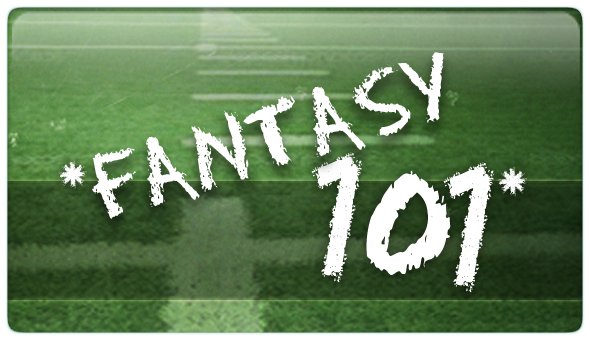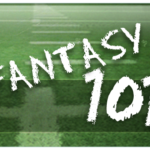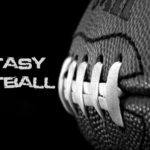We continue to get you ready for the upcoming fantasy season with some helpful advice in our Fantasy 101 series. Today we look at the importance of ranking players and some things to consider.
In this session we’ll be covering some things to look out for in players when creating your rankings, and different ways to get the upper hand on other owners. Open up your notebooks and start paying attention, class is now in session.
Before an owner is able to draft a team, they have to know how they would rank certain players based on their position, and when they would take them in the draft. When figuring out a ranking sheet, more factors than just “last year’s stats” come into play. Here are a few things that an owner should consider when ranking a player:
Are they injury prone? This is one of the most important factors as a player cannot get you points when they are watching from the sidelines.
Are they on a new team? It may take no time, a few games, or even a few years in order for a player to feel comfortable with a new system. A player that has been with a team/coach for numerous years is a lot more likely to not have these adjustment troubles.
Are they in a position battle? It would be a shame to draft a player that you think may start, only to see him get beaten out or split time with another player. On top of that, if that player struggles, it is likely that they could get replaced easier than a player that is unquestionably the starter.
Are they in a contract year? As if a player needs any more motivation, playing for a bigger paycheck can always help.
How old is the player? Obviously a rookie has more potential than a 15-year veteran, but they are also limited because of a lack of experience. For an older player injuries become more of a concern, and the likelihood of having a career year declines.
Anything that an owner can think of to determine how a player will perform should be used. These are just a few of the factors that need to be taken into consideration when determining how a player will perform in the upcoming year.
When drafting a fantasy football team it is likely that a player who you have coveted will get taken right before you get a chance to select him. If this is the case then make sure that you don’t make too much of a stink about how you wanted this player so badly. The reasoning behind this is that it is much easier to acquire that player in a trade when the other owner doesn’t know that you want him so much. However, if on draft day you reacted like you were a schoolgirl watching a scary movie, then the opposing owner is going to garner more in a trade because they know that you want them so much. A good rule of thumb is to treat the fantasy draft like a game of poker. You don’t want other people to know what you are holding (or in this case, who you want).
Part of playing poker is knowing the tendencies of the other players. In fantasy football, it is always nice to know if an owner has an inclination to draft certain players. It is always nice to have players from your favorite team on your actual fantasy team. However, don’t let it stand in the way of drafting a good fantasy team. If you do find out that a certain owner likes to draft players from a certain team (or drafts the same player every year), then by all means take that into consideration and try and use it against them. Just like in poker, no one is stopping you from talking up a certain player, only to be bluffing that you want them. Make the opposing owner think that you want that player so that they select the player earlier than they should. Remember, being a successful GM isn’t just about drafting. It’s also about how you can manipulate the other players into doing things that you want them to do.
Another way in which you can manipulate other owners is thru trading. Throughout the course of an NFL season players are bound to get injured, not perform up to expectations, or just plain old suck. A successful GM will look into numerous things about a player that isn’t performing, and then evaluate if they may be able to steal him from the opposing owner. Even though the player isn’t performing well, it may be early in the season and the opposing owner is not patient. If this is the case then tempt that owner with a player that is off to a hot start (or has a few good games), but is likely to cool down as the season goes on. As for trading for an injured player, look at how much depth you have at that position. If you are able to take on that player, have him sit on the bench, and wait out the injury then by all means do so. Not every team is as deep as each other. Because of this certain owners may not be able to sit an injured player, and instead need the instant gratification.
A third way to manipulate other owners in trading is by giving them “more players in return for less” (ex. You are giving up 2 players in exchange for 1, or 3 for 2). This is usually an easy way to pull one over on inexperienced or unknowledgeable owners. Essentially what you are trying to do is make the statistics of the two players that you are giving up look better (when they are combined) than the one player that you are getting. Often you are giving up a player that is of above average skills and a player of average skills, for a player that is a superstar. The owner that is receiving fewer players now has an extra roster spot in which they can play with. What the opposing owner fails to realize is that it is very easy to replace a player of average skills. That’s what the waiver wire is for. On top of that, that owner is also going to have to drop someone in order to make space on their roster for 1 more player. On the other hand, it is very hard to find a replacement for a player that always puts up Pro Bowl numbers. Unless your team is decimated by injuries and you need the extra bodies, make sure that your trades are either in your favor (2 for 1, or 3 for 2) or straight up (1 for 1, 2 for 2).






